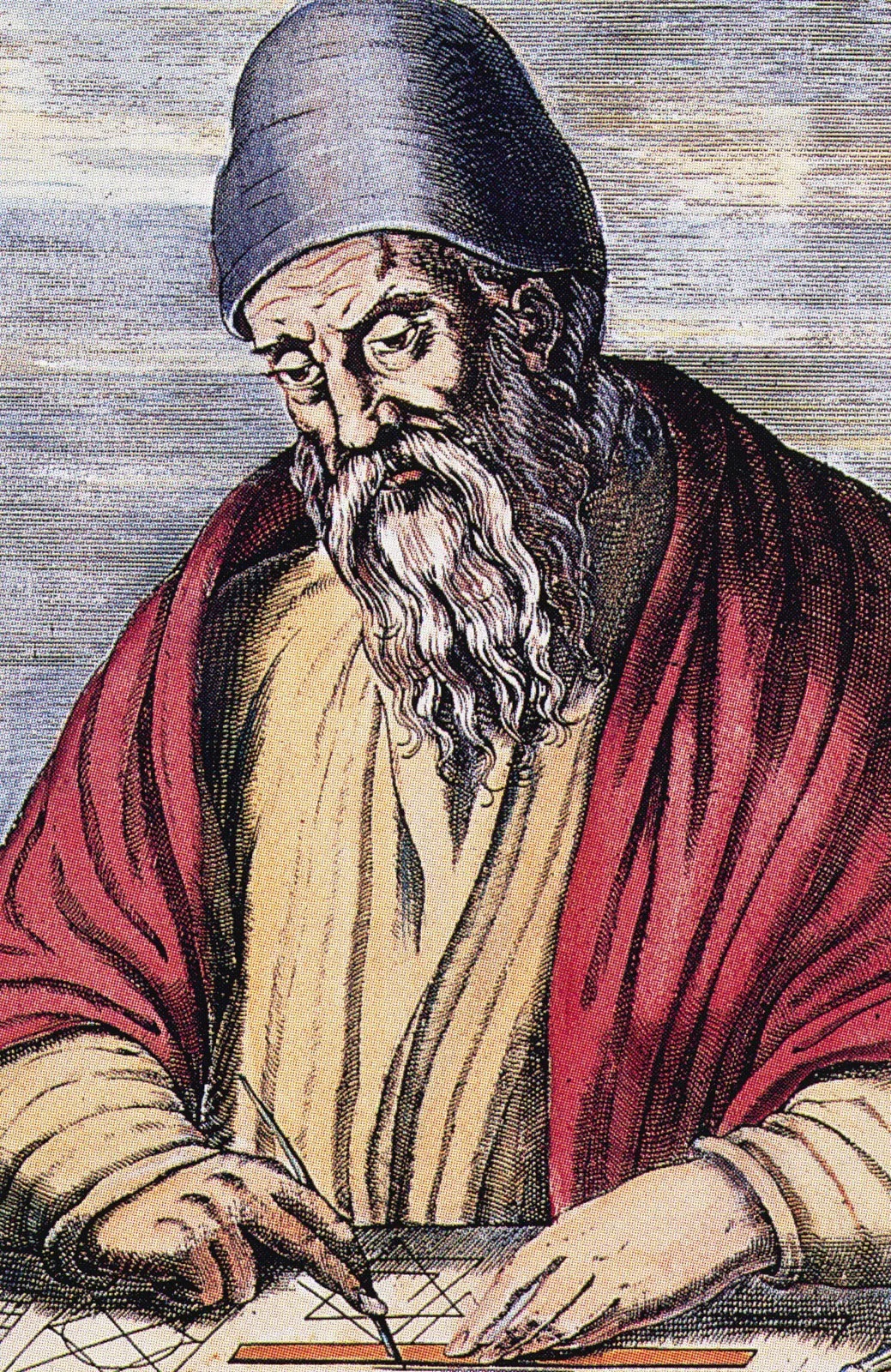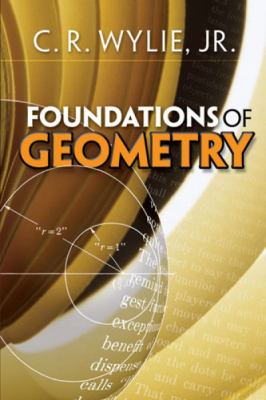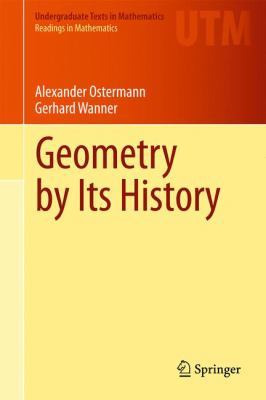 Euclid of Alexandria (circa 325 BCE-circa 265 BCE) |
 Euclid of Alexandria (circa 325 BCE-circa 265 BCE) |
COURSE: MATH 4157/5157
TIME: TBA, PLACE: TBA
INSTRUCTOR: Dr. Robert Gardner, OFFICE: Room 308F of Gilbreath Hall
OFFICE HOURS: TBA, PHONE: 439-6979 (Math Office 439-4349)
E-MAIL: gardnerr@etsu.edu
WEBPAGE: Dr. Bob's faculty webpage
TEXTS: Foundations of Geometry, C. R. Wylie, Jr. (McGraw-Hill, 1964; reprinted by Dover Publications, 2009), and and (as a supplement) Geometry by Its History, by A. Ostermann and G. Wanner (Springer Verlag, Undergraduate Texts in Mathematics, 2012).


PREREQUISITES: Linear Algebra (MATH 2010), and Mathematical Reasoning (MATH 3000).
CLASS NOTES: Online notes are available and the lecture component of the class will be based on these notes. Limited marginal notes, additional examples, and homework hints will be given using a document camera and handwritten material. Class notes are online, based on the two textbooks: Geometry by Its History and Foundations of Geometry. You should read the online notes to be covered in class before each class and try to at least understand the definitions, examples, and the meanings of the theorems.
ZOOM AND ATTENDANCE: A Zoom meeting and recording of each class will be available. However, you are expected to attend in-person! In-person attendance will be informally taken during each class. If you are not feeling well or for other reasons cannot attend, let me know before class starts. The recordings will be available (if all of the technology works) and you can view them (or re-view them) as needed.
ABOUT THE COURSE: The course description as given in the 2024-25 Undergraduate Catalog is: "Introduces Euclidean and non-Euclidean geometries, emphasizing the distinction between the axiomatic characterizations, and the transformational characterizations of these geometries. Some history of the development of the discipline also is included." For the history component, we turn to Ostermann and Wanner's Geometry by its History. The bulk of the class is based on Wylie's Foundations of Geometry, where we consider a modern axiomatic approach to Euclidean geometry and address the non-Euclidean geometry of hyperbolic geometry. Notes on transformational geometry are online at Axiomatic and Transformational Geometry - Transformational Geometry Class Notes, though it is unlikely that we will have time to explore this topic in any depth. I also have notes on projective geometry online at Axiomatic and Transformational - Projective Geometry Class Notes. The topics of tranformational geometry and projective geometry were formerly offered in the ETSU graduate class "Axiomatic and Transformational Geometry" (MATH 5330). The catalog description in the 2014-15 ETSU Graduate Catalog was: "Axiomatic and finite geometries. Euclidean geometry synthetic/analytic), transformational geometries, non-Euclidean and projective geometries." This class was removed from the catalog in 2015 and some of the topics added to Introcution to Modern Geometry. I also have a few finite geometry notes in preparation online at Axiomatic and Transformational Geometry Class Notes - Finite Geometry.
GRADING: Homework will be assigned on a regular basis (weekly). There will be a midterm exam and a (noncomprehensive) final exam. Your grade will be computed based on your performance on these in a way yet to be determined. Grades will be assigned based on a 10 point scale with "plus" and "minus" grades being assigned as appropriate (which means, based on how the university assigns grade points, 3 point intervals for plus and minus grades - for example, an A- corresponds to percentage grades of 90, 91, and 92).
HOMEWORK: Homework will be assigned and collected at one week intervals. It will normally be due on Saturdays at midnight and you will be expected to submit scans in PDF of your work to D2L (so you will need a way to convert your solutions into PDF versions, either with a scanner of a phone APP). YOU MUST SHOW ALL DETAILS ON THE HOMEWORK PROBLEMS!!! Justify every step and claim you make - this is how you convince me that you know what you are doing. Hints on the homework problems will be given in class and you will be required to follow those hints (and the notation used in the hints) in your solutions. You may find some answers online, but these rarely sufficiently justify all steps and are unacceptable as homework solutions.
DESIRE2LEARN: I will not rely on the Desire2Learn ("elearn") website for classnotes or supplements. Instead, I will simply post this material directly on the internet. However, I will post your homework grades, homework solutions, test grades, and recordings of class lectures on D2L.
SYLLABUS ATTACHMENT: You can find an on-line version of the university's syllabus attachment (which contains general information concerning advisement, honor codes, dropping, etc.; last accessed 8/18/2024).
TENTATIVE OUTLINE:
Chapter 1. Thales and Pythagoras. (From Ostermann and Wanner)
Thales' Theorem, Eudemus' History of Geometry, similar figures, propertis of angles, regular pentagon, areas, approximation of the square root of 2 in a Babylonian tablet, Pythagorean Theorem, Compass and straight-edge constructions.
Chapter 2. The Elements of Euclid. (From Ostermann and Wanner)
The content of Euclid's Elements (circles, angles, real numbers, number theory, sold geometry, areas and volumes.
Chapter 1. The Axiomatic Method. (From Wylie)
Inductive/deductive reasoning, axiomatic systems, consistency, independence, completeness of an axiomatic system, categoricalness of an axiomatic system, finite geometries.
Chapter 2. Euclidean Geometry. (From Wylie)
Shortcomings of Euclid's Elements, Postulate of Connection, introduction of distance, order relations, angles and their properties, triangles, polygons, Congruence Postulate, Parallel Postulate, similar triangles, Pythagorean Theorem, area, lines and planes in space, circles.
Chapter 4. Plane Hyperbolic Geometry. (From Wylie)
Parallel Postulate for hyperbolic geometry, asymptotic triangles, Saccheri qudrilaterals, angle sum, properties of parallel lines, defect and area.
IMPORTANT DATES: (see the official ETSU calendar for more details; accessed 8/18/2024). Specific dates are TBA.
| |
|
|||
| |
||||
Return to Bob Gardner's home page
Last updated: Novmber 28, 2024